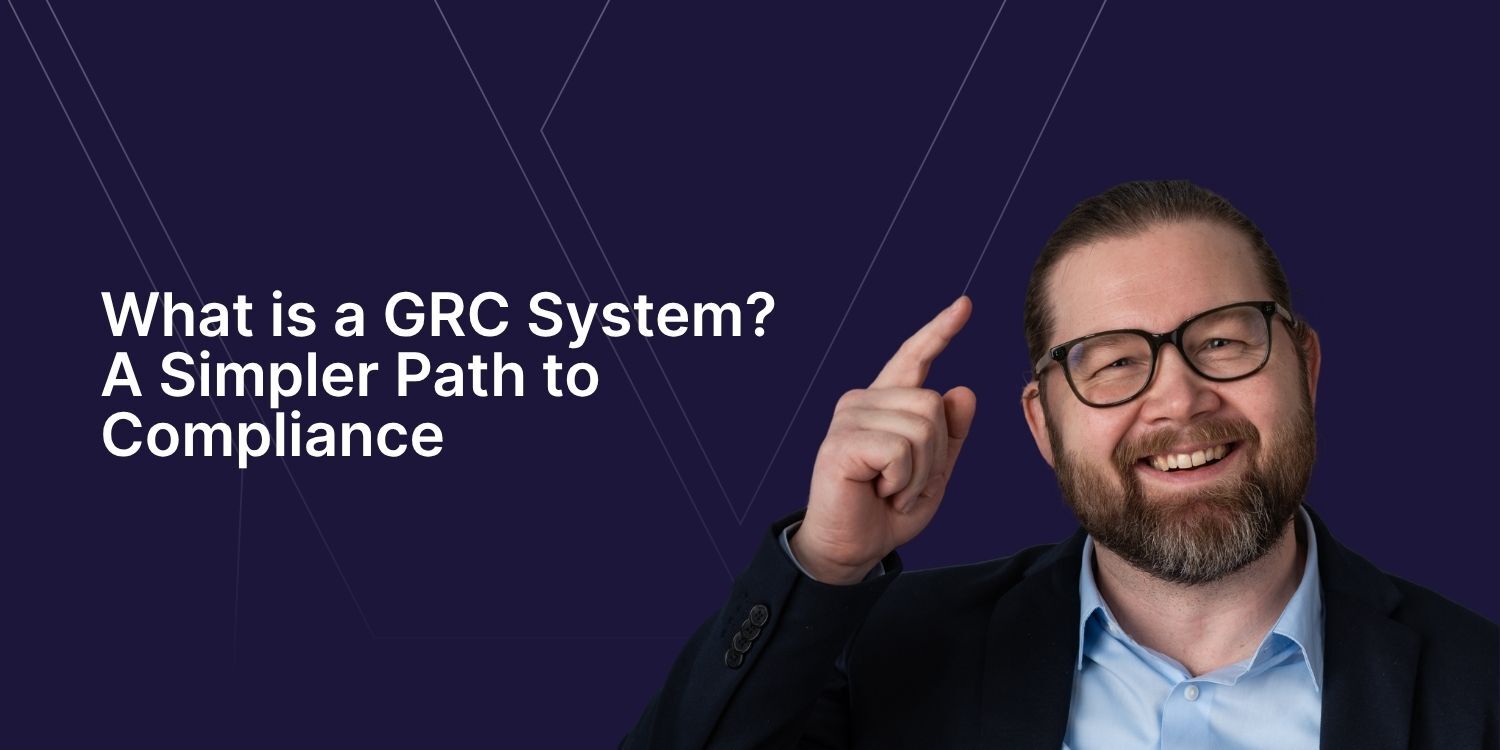What is a GRC system? A simpler path to compliance

Monday morning. You sit down with your first coffee, only to be hit by a wave of emails: a vendor has reported a data breach, a client needs a compliance audit yesterday, and the legal team is forwarding an urgent update about NIS2. Oh, and there’s that quarterly risk assessment you meant to finalise last week.
You open the half-dozen spreadsheets and documents where everything supposedly lives — but they don't talk to each other. You spend until lunch just trying to figure out where things stand.
Sound familiar?
That sense of spinning plates is something many compliance professionals live with every day. From GDPR to NIS2, ISO frameworks to surprise audits, the expectations are high and the resources are limited. It's like navigating through a storm with no map, no compass, and no backup.
This is where GRC systems come in.
What is a GRC system?
A GRC (Governance, Risk, and Compliance) system is a platform designed to help organisations manage their:
- compliance obligations,
- systems and vendors,
- data processing activities
- risk assessments,
- policies and,
- controls across the business.
In the years following GDPR's introduction, many organisations scrambled to build their own systems or pieced together spreadsheets, project tools, and endless documents.
Modern GRC systems aim to unify this fragmented reality. Done right, a GRC system becomes the central nervous system for compliance efforts and enables professionals to coordinate across departments, keep up with changing requirements, and ensure that no task falls through the cracks.
{{factbox-dark}}
3 key considerations when choosing a GRC system
1. Is it truly user-friendly?
The best systems don't require a manual. You should be able to log in and intuitively understand where things live and how to get started. Test this by spending some time in a trial version. If you feel at ease, it passes the test.
2. Can it be anchored in the organisation?
If only one person knows how to use the system, you're in trouble. A good GRC system allows collaboration across departments and roles, making it easier to build accountability and resilience into your compliance efforts. Have colleagues (also non-compliance people) test the system as well.
3. Does it reduce complexity, not add to it?
The goal is to make governance, risk and compliance simpler. Look for systems with built-in best practices, templates, and automation that make everyday tasks faster and more consistent — not more confusing. A good system should help you do more with less.
Why many GRC systems fail
Unfortunately, not all GRC systems live up to their promise. Many platforms come unconfigured, offering endless flexibility but no clear path forward. Compliance teams are left to build everything from scratch — turning what should be a GPS into a DIY map-making project.
Worse, the complexity often makes organisations dependent on expensive consultants for even minor changes.
Rather than reducing the burden, these systems add to it.
What to look for in a GRC system
As Jacob Høedt Larsen from Wired Relations puts it, "The path to compliance hell is paved with complicated systems." To avoid that fate, look for a GRC platform that:
- Is simple and intuitive to use from day one (no manuals required)
- Can be anchored across departments, not just in legal or IT
- Offers best practices built in to save time and improve quality
- Provides visual reporting for clear communication with management
- Facilitates collaboration without over-relying on any one person
In short, your GRC system should help you work smarter — not harder.
More resources
Explore related topics from our blog:
- What is GRC? A simple breakdown of Governance, Risk and Compliance
- Compliance officers drowning in complexity: Three tips to reduce the workload
- Choosing the right GRC system: 3 key considerations when changing compliance systems
- Why an annual cycle is essential in information security
- Maintaining NIS2 compliance: 5 tips for sustainable information security
📘 Ready to simplify your GRC programme?
Struggling to keep up with GDPR, NIS2 or ISO? Discover how a simple GRC system can streamline your data protection and information security work. Learn what to look for when choosing software—and how to avoid costly complexity.


.webp)




.jpg)